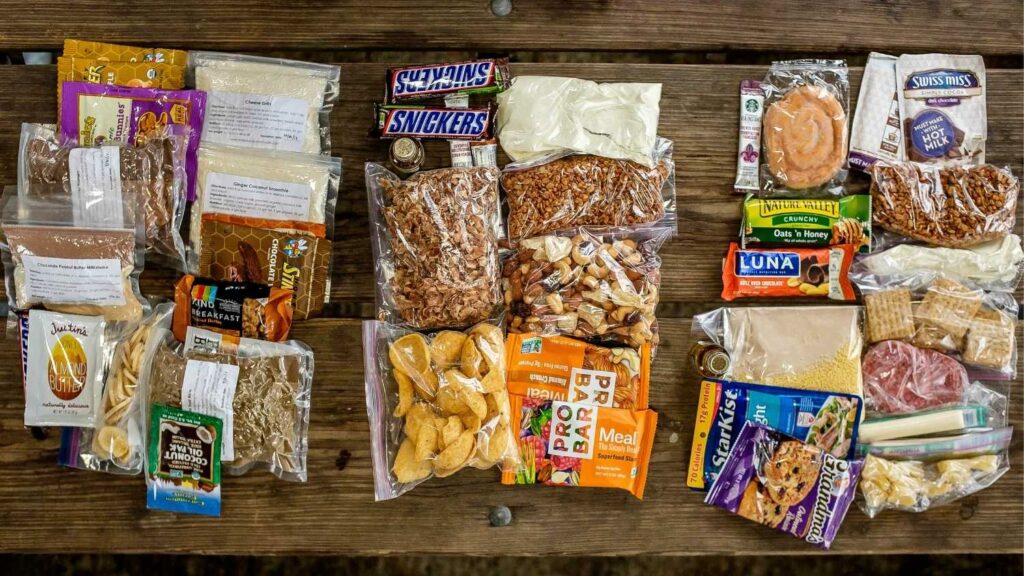How to Choose Travel Clothing
Occasional travelers often ask: “What should I wear? And, “how many clothes should I bring?”
Packing clothing for a big trip may seem overwhelming at first, but packing smart can alleviate unnecessary stress. When traveling, especially to another country, it’s best to pack a few lightweight clothing items that work for every kind of adventure—from city touring to wilderness exploring.
This article gives you the basics on how to shop and pack.
Travel Clothing 101
The key to packing smart is to find a few key pieces you can wear virtually anywhere and during any time of day. Look for:
Performance fabrics: Fabrics that are breathable, moisture-wicking, and easy to care to make smart choices for traveling. See our fabric comparison, below.
Neutral colors: Luggage space is precious. Ditch the bright colors and pack neutral—brown, black, and khaki—especially for pants, shorts, and skirts. These colors coordinate well with everything, so you can pack less.
Wrinkle resistance: Look for garments touted as wrinkle-resistant. This doesn’t mean wrinkle-free, but they should at least wrinkle less than other garments.
Subtle styling: Standing out from the local culture usually can’t be helped, but the clothing you wear can make you feel less conspicuous. Avoid tight clothing or very short shorts and skirts. This type of clothing might not be acceptable in some cultures or venues.
Sun protection: All fabrics block UV rays to some degree, but sun-protection clothing features an ultraviolet protection factor (UPF) rating against both UVA and UVB rays. A garment with a UPF of 50 blocks 98% of UV rays. Sun-protection garments are rated from 15 (good) to 50+ (excellent), and this protection never washes off or sweats away. For details, see the REI Expert Advice article, Sun Protection Clothing Basics.
Insect protection: Bugs can be a real nuisance. Worse, in some areas, West Nile virus, Lyme disease, dengue fever, malaria, or encephalitis can be genuine concerns. A few clothing lines, such as the ExOfficio® Insect Shield collection, are treated with permethrin, an insecticide engineered specifically for fabrics, to protect your skin from insects. Effective against ticks, mosquitoes, and dozens of other insects, permethrin has been safely used for decades and its use is recommended by the CDC (Centers for Disease Control and Prevention). You can also apply permethrin in spray form to your other clothing and gear.
Pockets: These become especially useful when you’re packing just a few shirts and pants for a trip. A few tips:
- Shirt pockets: Best for tickets, sunglasses, or other small items.
- Pants and skirt pockets: Some incorporate hidden passport or money pockets, which can be more comfortable than wearing a separate money belt under your clothing.
- Zippered pockets: These offer better security from loss or theft than button closures.
Comparing Fabrics
Fabrics should breathe well, wick moisture away from your skin, and dry quickly. Cotton, while OK for casual wear, is generally less suited for traveling than the fabrics listed below. Your most common choices:
Nylon and polyester: Most performance fabrics feature either of these synthetics. Some name brands include CoolMax® polyester or Cordura® nylon.
- Pros: Breathable, lightweight, wicks away moisture and dries quickly, resists pilling and abrasion.
- Cons: Slightly less forgiving feel than cotton.
Tencel® and polynosic rayons: Tencel is a brand name for lyocell, a wood-pulp-based fiber that is part of the rayon family. Tencel and polynosic rayons offer similar drape and comfort, plus both offer machine wash/dry convenience. (Note: A similar fabric, viscose rayon, is typically dry clean only, so check the care instructions to be sure.)
- Pros: Silky smooth feel, dries quickly, and resists wrinkles; Tencel is made using an environmentally friendly process.
- Cons: Doesn’t wick away moisture as well as polyester or nylon.
Silk: Luxuriously soft, it’s most often used in underwear.
- Pros: Lightweight, breathable, durable—ideal for warm climates.
- Cons: Less durable than other materials.
Cotton: This is commonly used for casual, all-around styles.
- Pros: Soft, durable, breathable, versatile styling, and easy care
- Cons: Doesn’t wick away moisture or dry as fast as nylon or polyester
Cotton/polyester blend: Another common fabrication for casual wear, this blend seeks to offer both comfort and performance.
- Pros: Feels soft against the skin, breathable
- Cons: Doesn’t wick away moisture or dry as fast as 100% nylon or polyester
Plated fabrics: “Plated” refers to garments with one fabric (e.g., cotton) on the outside face, backed with another fabric type (e.g., polyester) against the skin. This approach is designed to offer the best attributes of both fabrics.
Travel Clothing Review
Below are garments that travelers should consider packing, no matter what type of adventure is on the itinerary.
- Travel-Friendly Jackets
- Pants/Shorts/Skirts/Dresses
- Shirts
- Fleece Tops and Wool Sweaters
- Hats
- Underwear and Socks
Travel-Friendly Jackets
In wet weather, stay dry and comfortable with waterproof/breathable (best) or water-resistant/breathable rainwear (good).
- Waterproof/breathable shells featuring Gore-Tex®, eVent®, or REI Elements® laminates are your best choice for a range of weather and activities. However, these jackets are pricier than other rainwear. Waterproof/breathable shells with fabric coatings (e.g., Marmot’s popular PreCip line) offer a more affordable alternative.
- Water-resistant/breathable shells repel wind and light rain while providing excellent breathability when you’re active. They are less bulky and less expensive than other shells but are not intended for significant rain.
Pants/Shorts/Skirts/Dresses
Shorts, skirts, and dresses are the obvious choice when traveling to a warm or tropical destination. But keep in mind that long pants will better protect you from sun, bugs, and rain. And, as mentioned above, you might need to wear them for cultural reasons, too.
Convertible pants have legs that easily zip off to turn into shorts. These are a great space-saving option.
Shirts
Always pack along a long-sleeve shirt, even if you’re headed to a warm climate. As with long pants, a long-sleeve shirt will protect you from sun, bugs, and rain. Some considerations:
- Knit shirts are stretchy, comfortable, and available in many styles; woven shirts typically buttons up the front and have vents to keep cool.
- Look for synthetic or merino wool shirts. Cotton is recommended only for casual activities or warm, dry climates.
- Fitness tops can work well for travel, too, especially in warm climates because they wick moisture to keep you cool.
Fleece Tops and Wool Sweaters
- Fleece tops and vests insulate well and wick away moisture. The downside: They can be bulky and don’t compress well in luggage.
- Wool sweaters keep you warm even when it gets wet, and it doesn’t retain odors like synthetic materials. Like fleece, though, some wool can be bulky.
Hats
Always bring a hat. Your choices:
- Rain hats feature a wide brim, waterproof/breathable construction, and a chin strap. They also double as sun protection.
- Sun hats are usually cotton or nylon for breathability and have grommets or mesh for ventilation. Some styles feature a cape to keep the sun off your neck and ears.
- Casual hats include ball caps and trekking hats. A wider brim will provide better protection from sun and rain.
Underwear and Socks
The same fabric rules apply for underwear and socks: A synthetic fabric is easier to care for than cotton, while merino wool products offer natural breathability and comfort. When choosing socks, know that synthetics and wool can help prevent blisters by keeping feet drier than cotton socks do.
Shop men’s clothing
Shop women’s clothing
Shop kids’ clothing
Packing Tips for Clothing
- Get organized: Use lightweight packing cubes (right) to keep socks and underwear separate from shirts and toiletries. They are available in multiple sizes.
- Be neat: Packing folders keep clothing looking pressed while traveling. Some can hold up to 15 garments.
- Avoid wrinkles: Another way to avoid wrinkles in your pants and dresses is by folding them at the knees. Try this technique: Place the top half of your pants and/or dresses inside your luggage with the bottom half draped outside. When all garments are stacked inside your luggage, fold the bottom of the garments at the knees back into the luggage.
- Smell fresh: Place dried lavender or flower-petal sachets in between a few layers of clothing while you’re packing. Doing this will keep your clothes smelling fresh and clean during the entire trip.
Happy travels!







